Not the kind of balance that tones things down. I’m talking bold, vibrant Thai flavors that work together like a perfect song of sweet, sour, salty, and spicy—sometimes all in one bite, often layered with bitter, pungent, and umami notes.
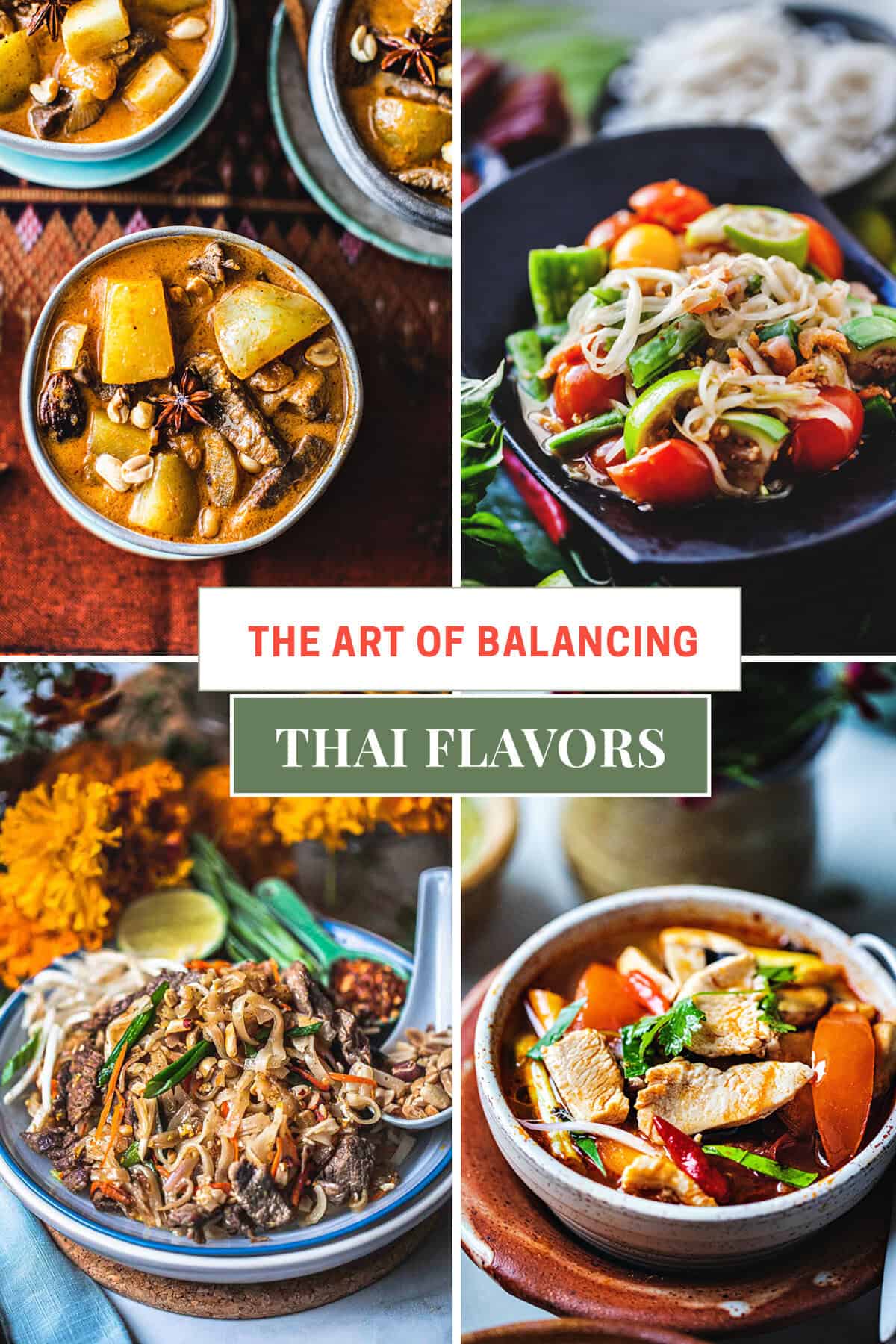
Once you understand these core flavors, you’ll know how to adjust any dish to suit your taste, from papaya salad to curry, even when something feels off. This blog post is your starting point for mastering how to balance Thai flavors at home.
Want to learn more about Thai food? Check out this Thai food by region article, Thai pantry essentials, and more Thai cooking tips on this Thai kitchen resources section.
How to Balance Thai Flavors
Getting that perfect balance right is what makes authentic Thai cuisine sing. And once you understand how to play with these core elements, you’ll be able to tweak any Thai dish to your taste—even when something feels off.
This guide is your introduction to the flavor wheel of Thai cooking—the foundation of every beloved dish from Pad Thai to Tom Yum, from green curry to green papaya salad.
Jump to:
- How to Balance Thai Flavors
- Exploring the Essence of Thai Food
- The 7 Core Pillars of Thai Flavors
- How to Fix a Dish That Tastes “Off”
- Tip!
- What About MSG in Thai Cooking?
- Examples of Balanced Thai Dishes
- Bringing Thai Cooking to Your Home
- How Are Thai Meals Traditionally Eaten?
- Download My Thai Flavor Guide
- Conclusion: Bring Thai Flavors Home
- "Tweak It, Don’t Toss It"
- More Recipes to Try
- Thai Kitchen Resources
- Hi there, I’m Suwanee!
Exploring the Essence of Thai Food
From Thai street food stalls in Bangkok to home kitchens in Isaan, Thai cooking is rooted in balance—flavor balance, texture balance, and ingredient harmony. You’ll find this in every bowl of curry, every plate of noodles, and every fiery bite of green papaya salad.


This post is for anyone who’s ever asked:
- How do I fix a Thai dish that tastes off?
- What is the significance of the Thai flavor wheel?
- What Thai ingredients give dishes their depth and brightness?
Let’s dig in.
The 7 Core Pillars of Thai Flavors
(Plus a few essential additions for true depth)
While sweet, sour, salty, and spicy are the four most well-known flavors in Thai cuisine, true flavor harmony includes bitter, pungent, and umami too.
1. Sweetness in Thai Cuisine
Sweetness adds roundness and calms heat or acid.
Common ingredients: palm sugar, coconut milk, brown sugar, ripe mango, pineapple.
Used in: Pad Thai, Massaman Curry, and sweet sauces.
2. The Brightness of Sour Flavors
Sour notes cut through richness and bring vibrancy.
Common ingredients: lime juice, tamarind paste, vinegar, green mango.
Used in: Tom Yum, green papaya salad, dipping sauces.
3. Saltiness: The Backbone of Thai Cooking
Salt doesn’t just season—it amplifies.
Common ingredients: fish sauce, soy sauce, sea salt, plara (fermented fish sauce).
Used in: Almost every savory Thai food recipe.
4. Spiciness: The Bold Kick of Thai Food
Spicy flavor wakes up your palate and adds depth.
Common ingredients: Thai chilies, chili paste, Nam Prik Pao, and curry pastes.
Used in: Laab, Som Tum, Thai curries, and stir-fries.
5. Bitter
Adds contrast and herbal complexity.
Found in: Bitter melon, neem leaves, Thai eggplant, some regional herbs.
6. Pungent
Bold aromatics that punch up flavor.
Think: garlic, shallots, shrimp paste, fermented fish, and kaffir lime leaves.
7. Umami
The savory depth that ties everything together.
Think: dried shrimp, fish sauce, fermented soybeans, mushrooms, and MSG.
How to Fix a Dish That Tastes “Off”
Sometimes you follow a recipe, but the final dish still feels… meh. That’s where this Thai flavor chart comes in. Use it like a Thai grandma would—taste, adjust, taste again:
| Problem | What to Add |
| Too salty | Add lime juice, sugar, or unsalted coconut milk or stock |
| Too sour | Add sugar or a splash of coconut milk |
| Too sweet | Add fish sauce or lime juice |
| Too spicy | Add sugar, coconut milk, or something bland like sticky rice |
| Too bland | Add fish sauce, a squeeze of lime, or chili flakes |
| Too bitter | Add palm sugar, coconut milk, or lime or tamarind |
Tip!
Always adjust in small amounts. Thai cooking is about layering slowly, not dumping everything at once.
What About MSG in Thai Cooking?
MSG (monosodium glutamate) often gets a bad reputation—but in Thai cooking, it’s a long-standing flavor enhancer, especially in street food and countryside kitchens. It adds that unmistakable umami depth, like a flavor booster that ties everything together.
Worried about using it? Don’t be. MSG is found naturally in tomatoes, mushrooms, and fermented foods. Many Thai cooks use a sprinkle to bring out the richness of a broth or balance a dish that feels flat.
Don’t want to use MSG? That’s okay too. Just focus on boosting natural umami with ingredients like fish sauce, dried shrimp, mushroom powder, or fermented soybeans.
Examples of Balanced Thai Dishes
Thai Tom Yum (Hot & Sour Soup)
Flavors: Sour, salty, spicy, with a hint of sweet
Uses lime leaves, lemongrass, fish sauce, chili, and lime juice for the perfect balance.
Authentic Shrimp Pad Thai
Flavors: Sweet, sour, salty, and umami
Made with palm sugar, tamarind paste, soy sauce, and a squeeze of lime. Topped with peanuts and chili flakes.
Thai Green Papaya Salad (Som Tum)
Flavors: Sour, spicy, salty, and lightly sweet
Pounded in a mortar using green papaya, garlic, chilies, fish sauce, lime juice, and palm sugar.
Bringing Thai Cooking to Your Home
To recreate authentic Thai flavors at home, stock your pantry with these essentials. Click below for in-depth guides on how to use each ingredient, what it tastes like, where to buy it, and smart substitution tips from my Thai-American kitchen.
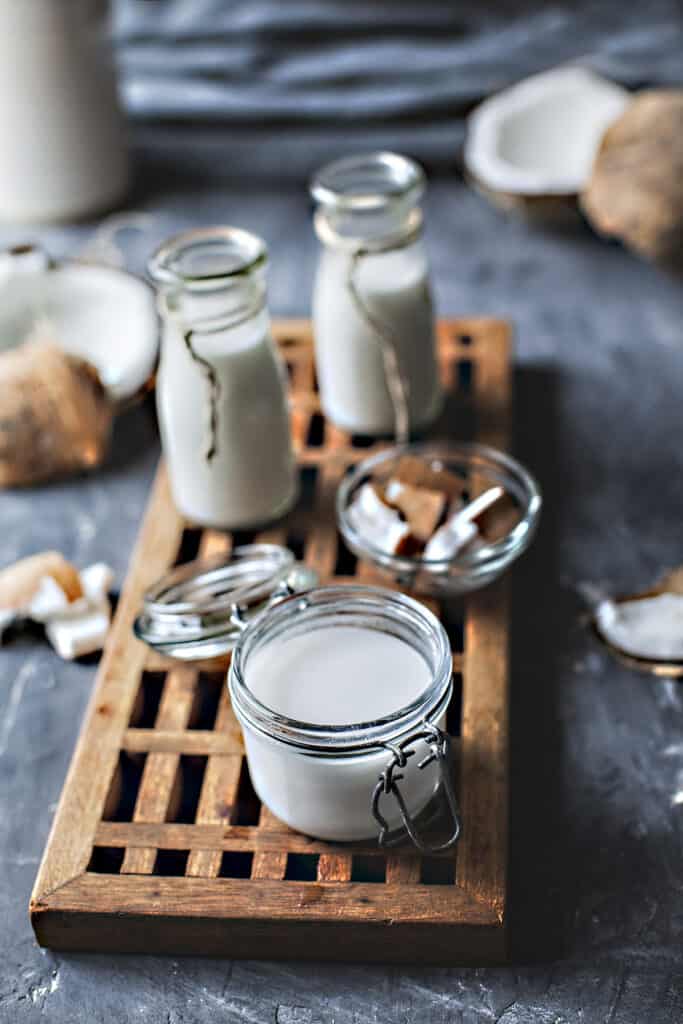
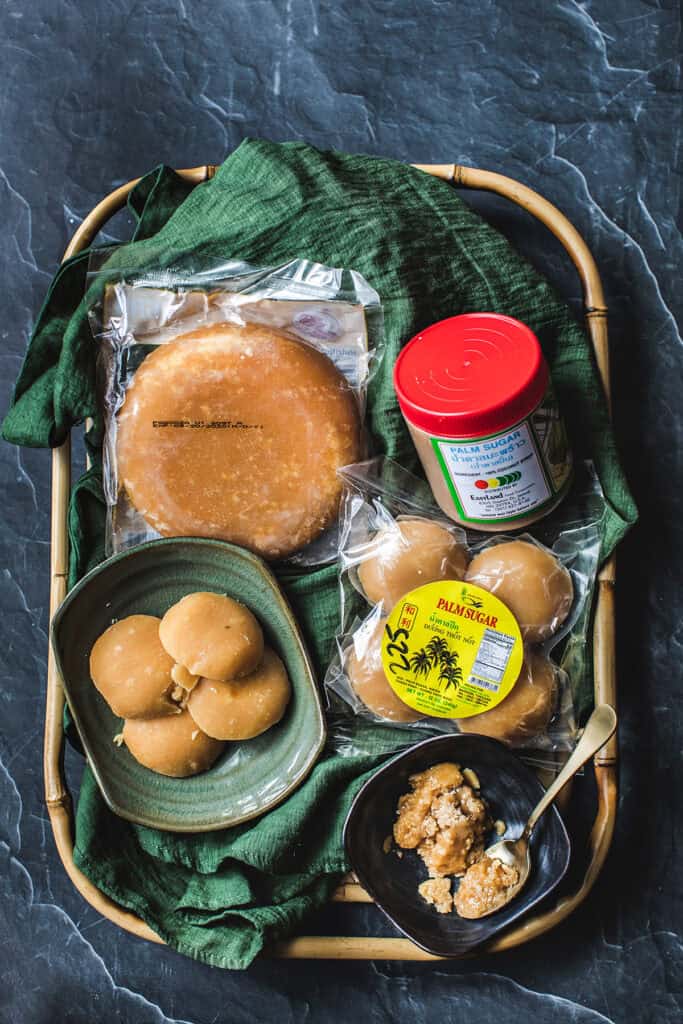
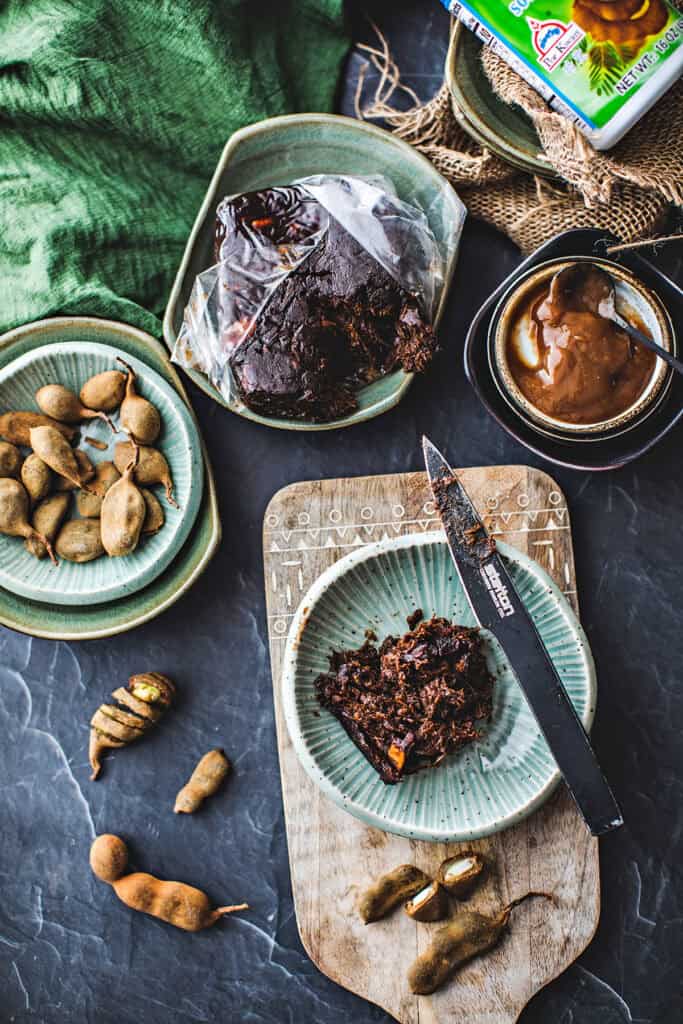
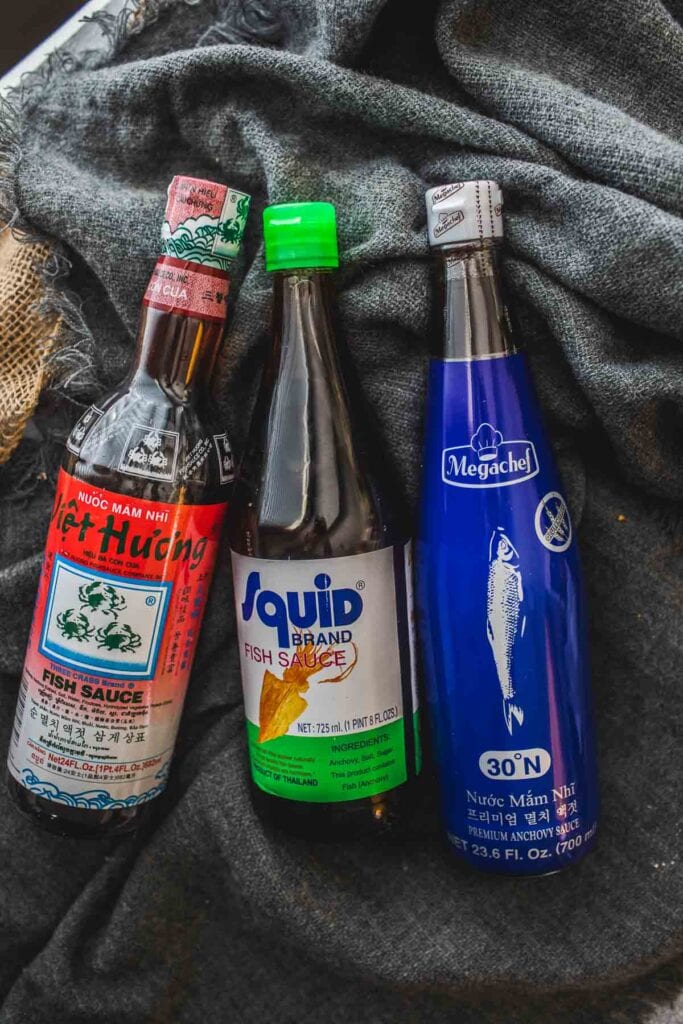
- Fish sauce – Salty, umami-rich, and foundational to savory Thai dishes.
- Palm sugar – Subtle, caramel-like sweetness used in everything from curries to dipping sauces.
- Tamarind paste – Sour and fruity; gives Pad Thai, dipping sauces, and curries their distinctive tang.
- Coconut milk – Adds creaminess and subtle sweetness to Thai curries, soups, and desserts.
- Soy sauce – Adds depth, saltiness, and color to stir-fries and marinades.
- Kaffir lime leaves – Floral and citrusy; used in soups, curries, and chili pastes.
- Lemongrass – Fresh, zesty, and aromatic; simmered in soups and used in marinades.
- Chilies (fresh or dried) – Brings bold heat and complexity to Thai cooking, from dips to stir-fries.
- Tamarind – A tangy fruit pulp used in Thai sauces, soups, and salads—especially in authentic Pad Thai.
- Types of Thai rice – Learn the differences between sticky rice, jasmine rice, purple rice, and how to cook them properly.
→ Explore my full Thai Pantry Guide.
How Are Thai Meals Traditionally Eaten?
Thai meals are served family-style, with multiple dishes on the table. A spicy stir-fry might sit beside a mild soup, or a grilled fish might be paired with fresh herbs and dipping sauces.
Rice—especially sticky rice or jasmine—is the foundation. Diners take small bites from shared plates, layering textures and flavors as they go.
It’s casual, communal, and always built around flavor balance.
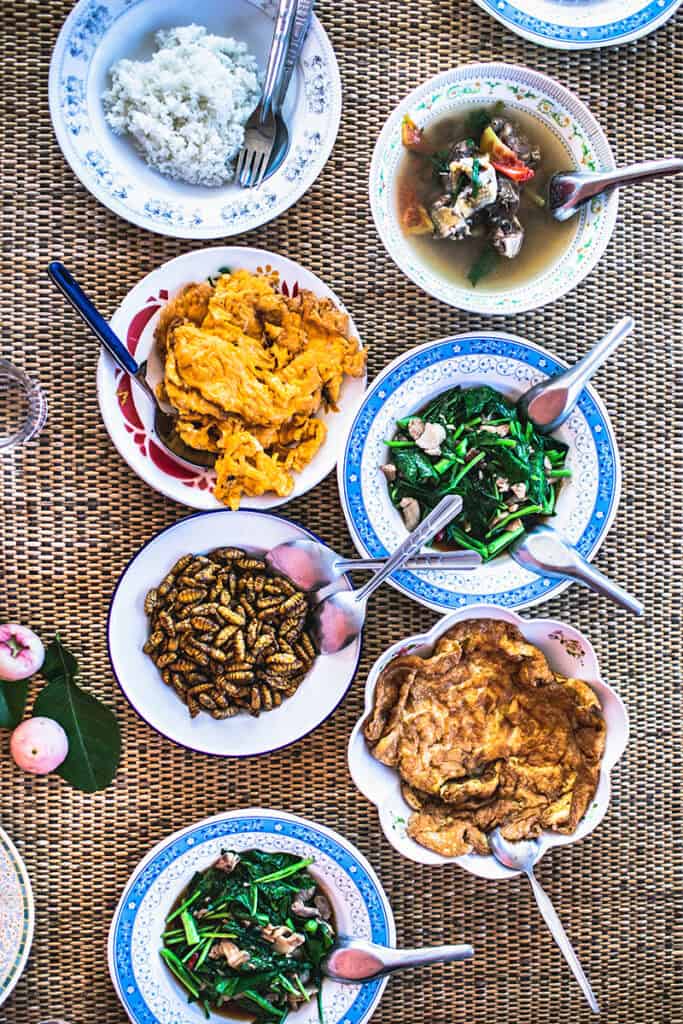
Download My Thai Flavor Guide
Want a printable version of this guide + ingredient swaps and cooking tools?
→ Grab My Free Thai Flavor Guide
You’ll get:
- Tools for mastering authentic Thai cooking
- A breakdown of essential Thai ingredients
- Substitution cheat sheet
- Flavor-fixing tips
Conclusion: Bring Thai Flavors Home
Mastering Thai food doesn’t mean memorizing every recipe—it means learning to taste, to adjust, and to chase that perfect flavor balance.
Whether you're making Pad Thai, simmering a bowl of Tom Yum, or tossing up a refreshing green papaya salad, every bite can be your own.
"Tweak It, Don’t Toss It"
So next time something tastes off, don’t panic—just tweak it. You’re closer than you think.
More Recipes to Try
Give these recipes a try and experience how balanced Thai flavors come together in every bite—bold, bright, and deeply satisfying.
- Best Pad Thai Sauce
- Lao/Isaan Papaya salad
- Thai Kabocha Squash Curry with Chicken
- Thai Crispy Fried Garlic and Oil (and How to use it)
Thai Kitchen Resources
Want to learn more about authentic Thai cooking? Don’t miss these helpful blog posts:

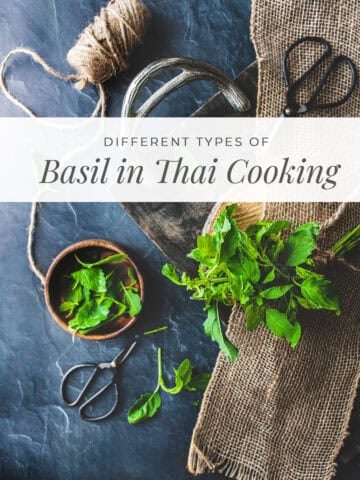
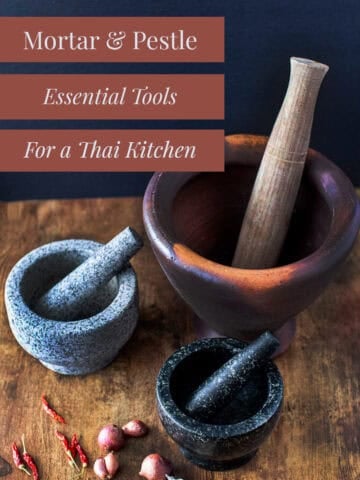



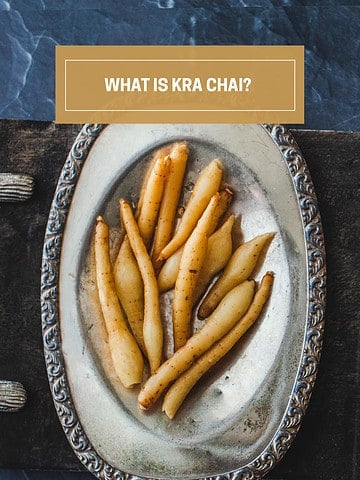

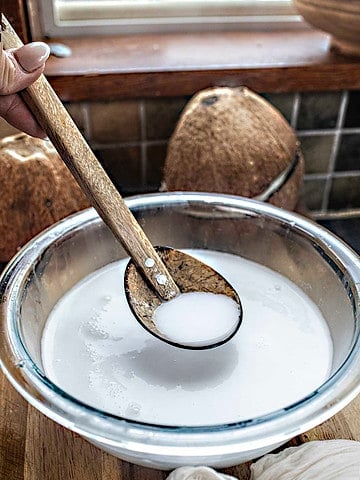
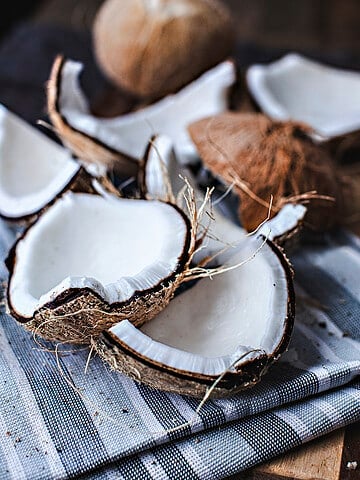
Leave a Reply